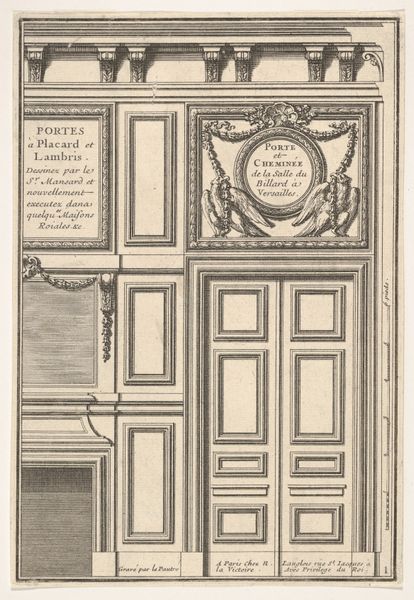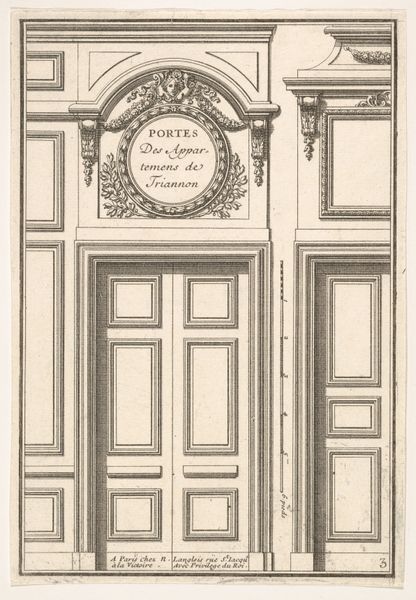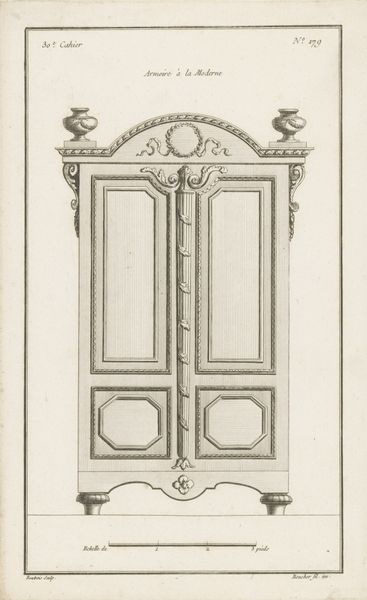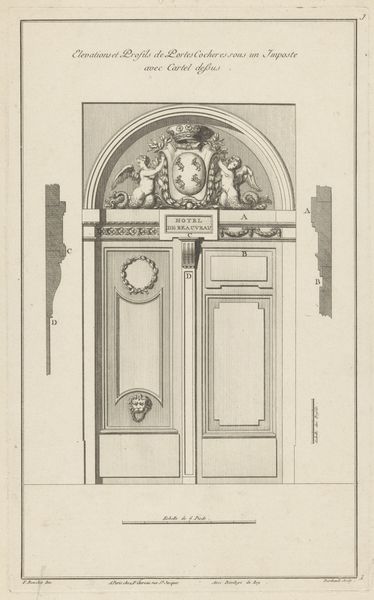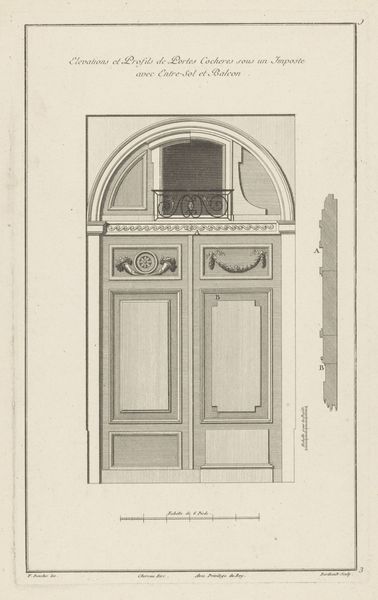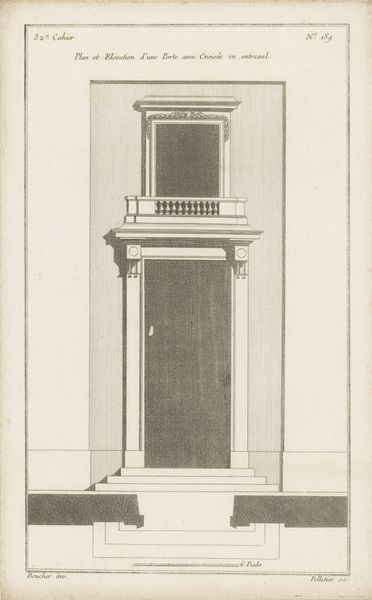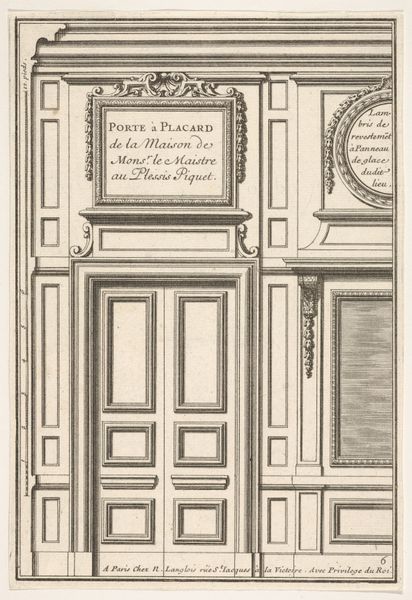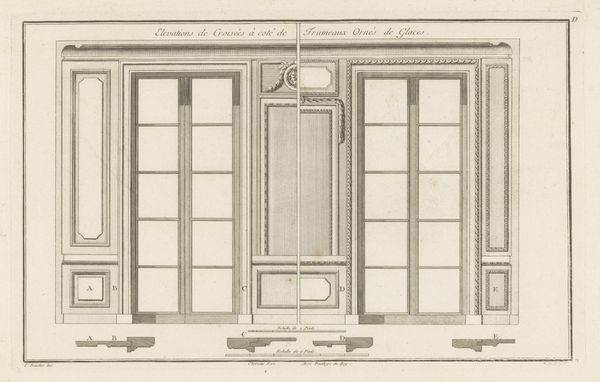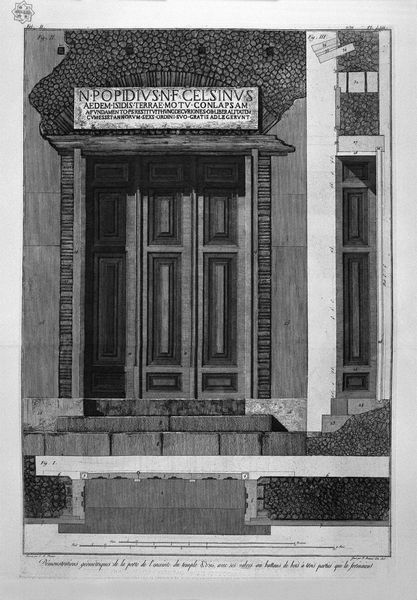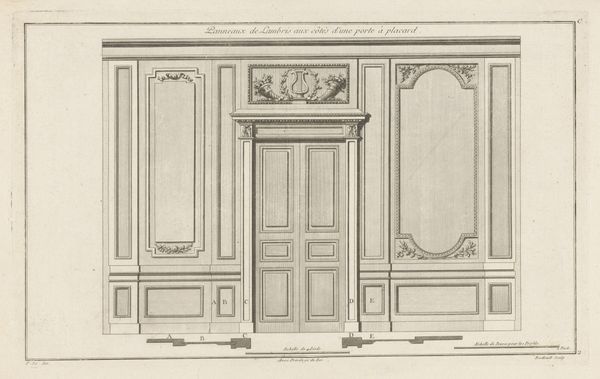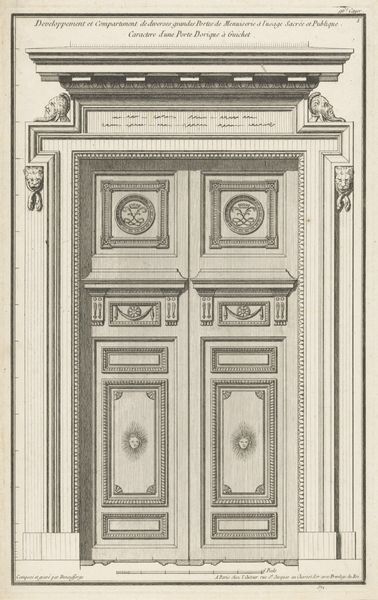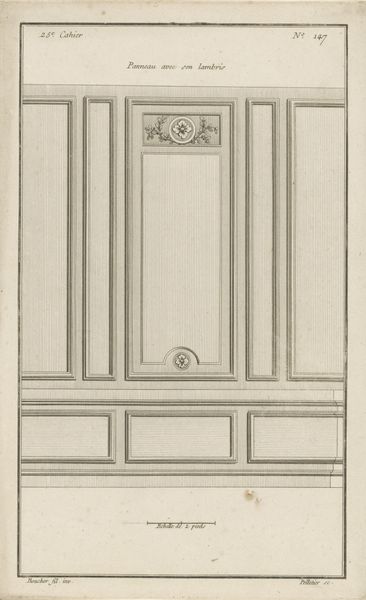
Porte et Cheminée de la Salle du Billard à Versailles 1700 - 1800
0:00
0:00
drawing, print, engraving, architecture
#
drawing
#
baroque
# print
#
french
#
france
#
history-painting
#
engraving
#
architecture
#
building
Dimensions: Overall: 13 x 9 1/8 x 3/16 in. (33 x 23.2 x 0.5 cm)
Copyright: Public Domain
Curator: Let's explore this detailed engraving entitled "Porte et Cheminée de la Salle du Billard à Versailles," dating from sometime between 1700 and 1800. It offers a meticulous rendering of architectural elements designed by Jules Hardouin Mansart. What's your initial reaction to it? Editor: Immediately, I'm struck by the emphasis on the crafted surface. Even in this black and white print, you can sense the variety of materials used and the incredible amount of labor involved in constructing something so ornate. It whispers of artisans. Curator: Precisely. Versailles, beyond its aesthetic appeal, embodies the sociopolitical structures of the French monarchy. The billiard room itself was a site of both leisure and negotiation among powerful figures, influencing significant historical decisions. To fully consider gender, think of Marie Antoinette’s supposed distaste for gambling; even the choice to represent THIS room and door becomes something to consider! Editor: It's intriguing how the engraving isolates these elements - the door and fireplace. Stripped of context, we are drawn to how these were constructed by artisans with a highly-developed level of skill. Engraving elevates everyday functional forms and reveals the economic forces at work; commissioning luxurious works like this bolstered workshops and employed the master craftspeople in their trades. Curator: It serves to solidify an idealized image of power and refinement through careful framing and perspective. Notice the precise inscriptions that name Mansart, subtly reminding us who designed such grandiose spaces to reflect absolute authority. Moreover, this elevation served gender dynamics, wherein men could engage at court. Editor: Absolutely, we can also explore how these architectural details represent luxury materials - perhaps specific varieties of marble, expensive hardwoods, meticulously-worked metals - readily acquired thanks to colonial extraction. We might look into how this "perfection" aligns or clashes with a material analysis through time to understand its changing context. Curator: Yes, situating it as both historical record and active participant within evolving debates around power, class, gender, and representation feels crucial. It pushes us beyond simply admiring beauty to confronting difficult truths. Editor: This dialogue really deepens my understanding. Focusing on materials grounds the drawing into labor processes, class divides, consumption practices—all elements of our tangible and political realities.
Comments
No comments
Be the first to comment and join the conversation on the ultimate creative platform.
